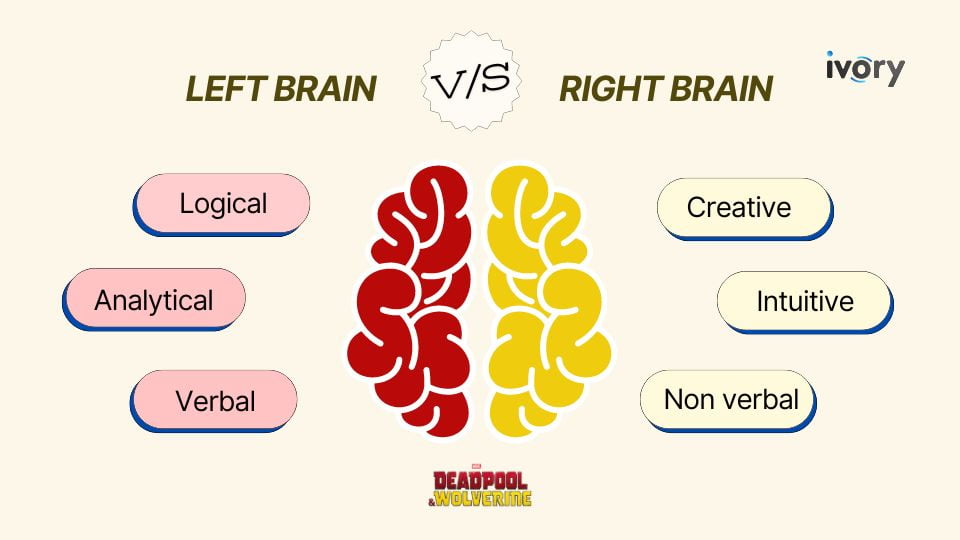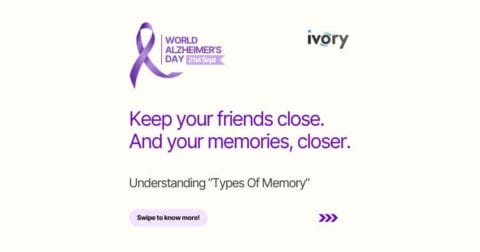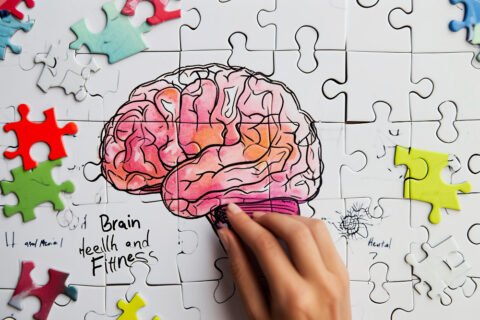Here’s a simple yet intriguing visual puzzle that might give you insight into which side of your brain is more dominant. The key is to focus on what you see first and how you interpret the image. So, let’s learn how to find out if you are Left-Brained or Right-Brained.
Look at the image below. What do you see first?
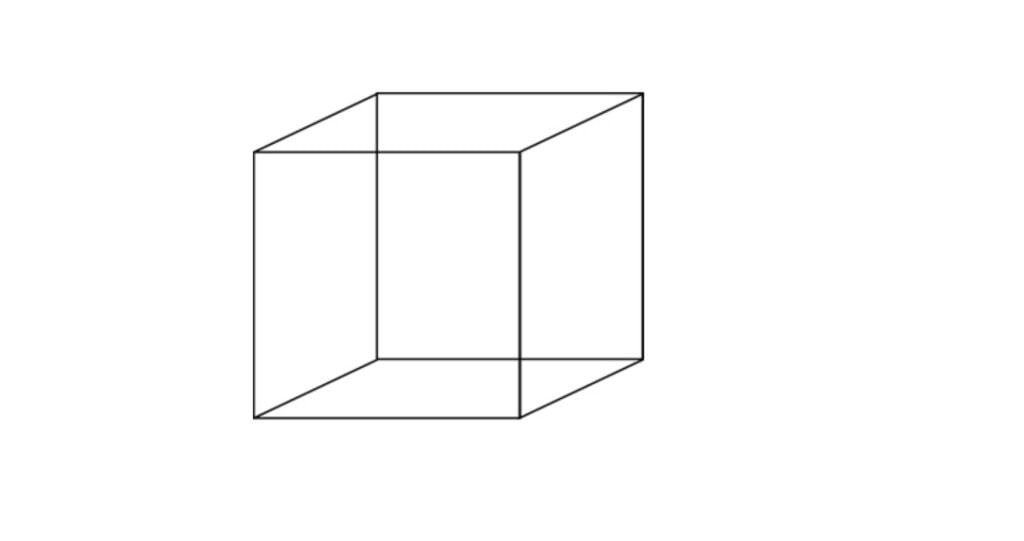
Interpretation:
- If you see the cube facing downwards and to the right: You might be more Left Brain, as this perspective typically appeals to logical and analytical thinking. The left brain tends to interpret images based on structure and reality.
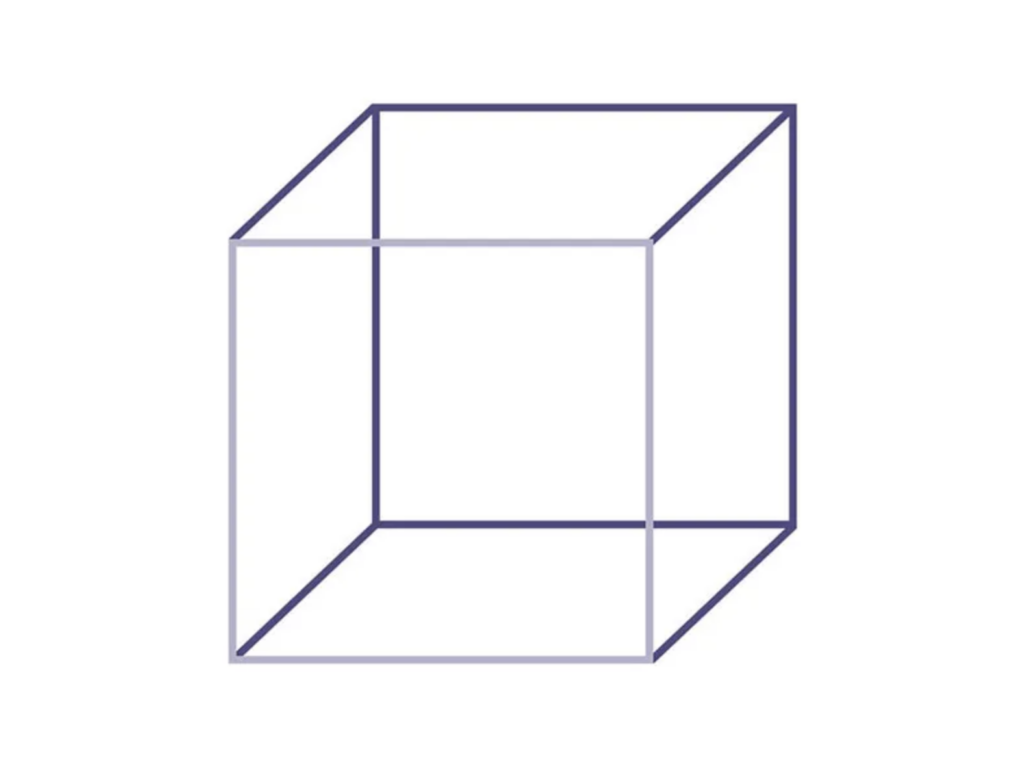
- If you see the cube facing upwards and to the left: You might be more Right Brain, as this perspective typically appeals to creative and imaginative thinking. The right brain often sees things in a more abstract or unconventional way.
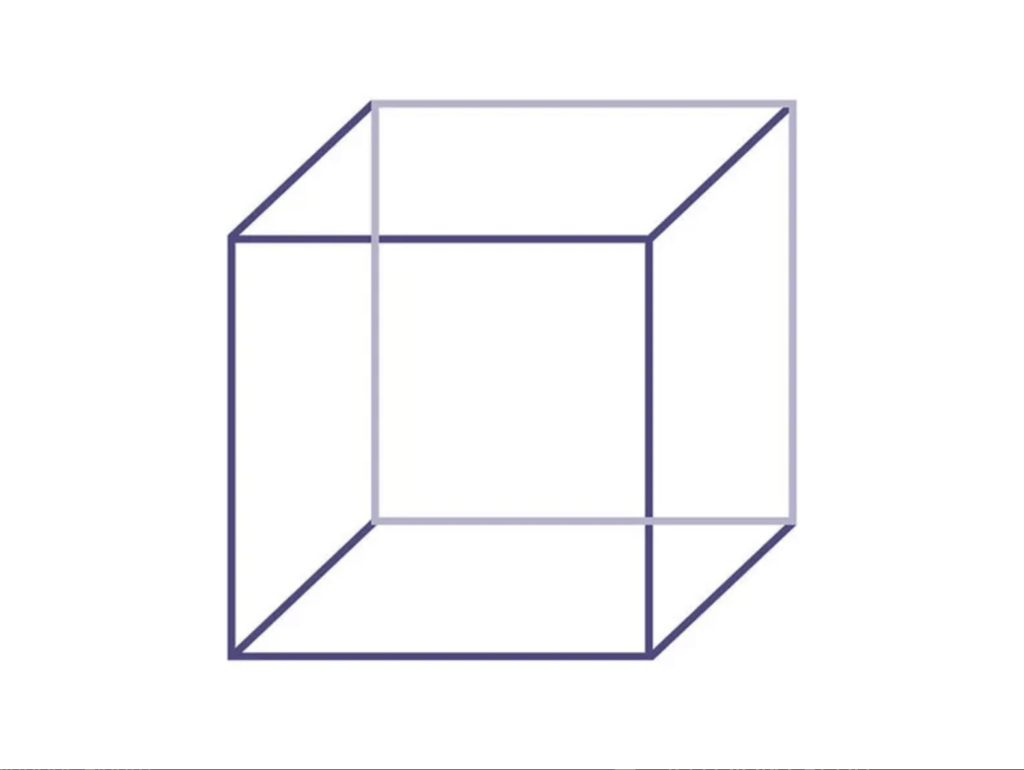
The Twist: This optical illusion, known as the Necker Cube, can be seen both ways. If you can switch between seeing both perspectives, it might suggest that you have a balanced use of both sides of your brain, indicating strong cognitive flexibility.
Remember, this visual puzzle is just a fun way to explore your brain’s tendencies. For a more in-depth understanding, consider taking one of the quizzes mentioned above or try out more puzzles that challenge both hemispheres of your brain!
Left Brain vs. Right Brain: The Ultimate Showdown – Which Side Dominates?
Have you ever wondered if you’re more of a logical thinker or a creative genius? The concept of the left brain vs. right brain has intrigued scientists, psychologists, and curious minds alike for decades. It’s a popular theory that suggests each hemisphere of your brain controls different types of thinking. But how accurate is this theory, and how can you find out which side of your brain is the real hero?
Let’s dive into the science, the myths, and the fun ways you can discover more about your brain’s unique abilities.
The Science Behind Left Brain vs. Right Brain:
The idea that the left and right hemispheres of the brain control different types of thinking was popularised in the 1960s by Nobel Prize-winning neuroscientist Roger W. Sperry. His research suggested that:
- Left Brain: This side is often associated with logical reasoning, analytical thinking, language, and numbers. People who are “left-brained” are said to excel in maths, logic, and detail-oriented tasks.
- Right Brain: The right hemisphere is believed to govern creativity, intuition, arts, and spatial abilities. “Right-brained” individuals are thought to be more artistic, imaginative, and emotional.
However, modern neuroscience has shown that the brain is far more integrated than this binary division suggests. While certain functions are more dominant in one hemisphere than the other, the two sides of the brain constantly communicate and work together to create a cohesive thought process.
Debunking the Myth
Recent studies have debunked the idea that people are strictly left-brained or right-brained. Brain imaging technology, such as fMRI, shows that both hemispheres are involved in nearly all cognitive tasks. For example, language processing, once thought to be solely a left-brain function, involves both hemispheres. Similarly, creative activities like drawing or playing music engage the logical left brain as well.
But just because the strict division isn’t entirely accurate doesn’t mean the concept isn’t useful or fun! Many people still find it helpful to understand their cognitive preferences in terms of left-brain or right-brain dominance.
Practical Applications: Understanding Your Brain’s Dominance
Knowing which side of your brain is more dominant can help you harness your strengths and improve areas where you might be weaker. Here’s how you can apply this knowledge in everyday life:
- Career Choices: Understanding your brain’s preferences can guide you in choosing a career that aligns with your cognitive strengths. For example, if your left brain is dominant, you might excel in roles that require detailed analysis, such as engineering or accounting. If your right brain is stronger, you might find more satisfaction in creative fields like design, art, or marketing.
- Learning Strategies: Tailoring your study methods to suit your brain’s strengths can improve your learning efficiency. Left-brained individuals might benefit from structured study routines and logical sequences, while right-brained learners might prefer visual aids and creative exploration.
- Problem-Solving: Knowing which side of your brain you naturally lean on can help you approach problems more effectively. For instance, left-brained individuals might tackle a problem methodically, while right-brained thinkers might come up with more innovative solutions.
Fun Brain Exercises to Balance Both Sides
Whether you’re predominantly left-brained or right-brained, it’s important to engage both hemispheres to maintain cognitive flexibility. Here are some exercises to help balance your brain’s functions:
- Crossword Puzzles & Sudoku: These classic games are excellent for engaging your logical left brain while also stimulating pattern recognition, a right-brain activity.
- Drawing & Doodling: Even if you don’t consider yourself artistic, drawing can help activate your right brain and improve your spatial abilities.
- Brain Games: Apps like Lumosity or Elevate offer a range of games designed to challenge both sides of your brain, from memory games to creative problem-solving tasks.
- Meditation & Mindfulness: These practices encourage whole-brain thinking by promoting relaxation and reducing stress, allowing both hemispheres to work together more harmoniously.
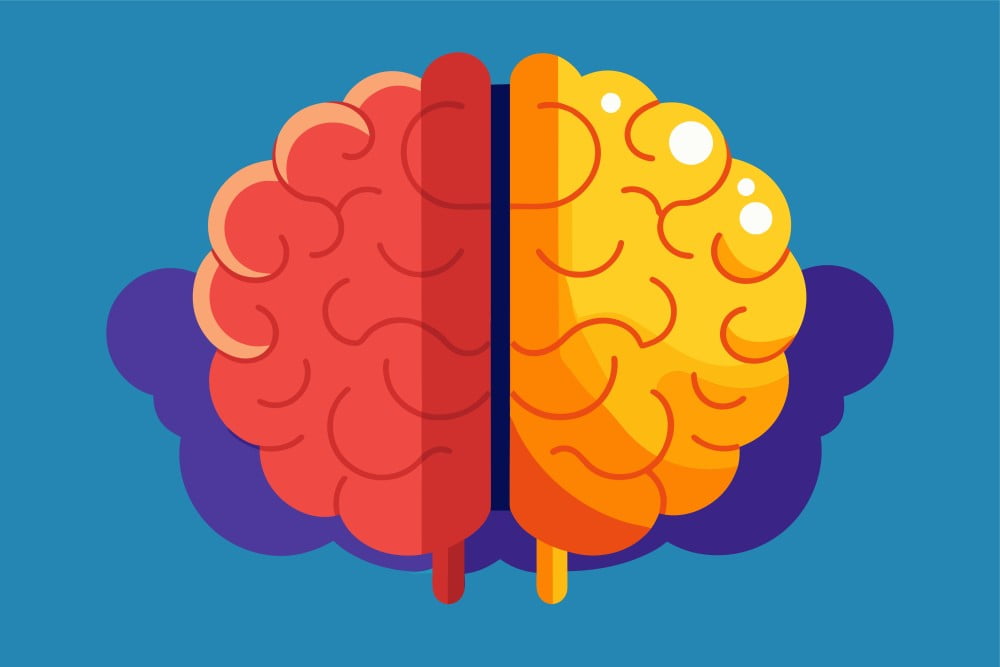
Embrace Your Whole Brain!
While the left brain vs. right brain theory may not be as clear-cut as once believed, exploring the different ways our brains function can still offer valuable insights. Whether you lean more towards logical thinking or creative expression, the key is to embrace and nurture both sides of your brain. By doing so, you can unlock your full cognitive potential and approach life’s challenges with a well-rounded mindset.
Curious about which side of your brain is more dominant? Take one of the quizzes mentioned above and start your journey towards understanding your brain’s unique strengths. Whether you’re a Deadpool-style creative or a Wolverine-like strategist, there’s always something new to learn about your brain! You will also like: Eidetic memory: Extraordinary ways our brain remembers.
Q: What is the left brain vs. right brain theory?
A: The left brain vs. right brain theory suggests that each hemisphere of the brain controls different types of thinking, with the left brain being more logical and analytical, and the right brain being more creative and intuitive.
A: While the theory is popular, modern neuroscience has shown that the brain is more integrated than previously thought, with both hemispheres working together for most cognitive tasks.
A: You can take quizzes and participate in activities that highlight your cognitive preferences. The article provides links to several fun and informative tests.
A: Left-brained individuals are typically more logical, detail-oriented, good with numbers, and prefer structured, analytical thinking.
A: Right-brained individuals are usually more creative, imaginative, good with arts, and prefer holistic, intuitive thinking.
A: Yes, most people use both sides of their brain, and cognitive tasks often involve both hemispheres. Some people may have a slight preference, but the brain works best when both sides collaborate.
A: Engaging in activities that challenge your non-dominant side, such as creative exercises for left-brained individuals or logical puzzles for right-brained individuals, can help balance your cognitive abilities.
A: Yes, left-brained people may excel in fields like engineering, accounting, or law, while right-brained people may thrive in creative fields like design, art, or marketing.
A: Activities like playing musical instruments, solving puzzles, drawing, and even certain physical exercises like yoga can engage and balance both hemispheres of the brain.
A: Understanding your brain’s strengths can help you tailor your learning strategies, improve problem-solving skills, and choose activities that enhance your overall cognitive health.
